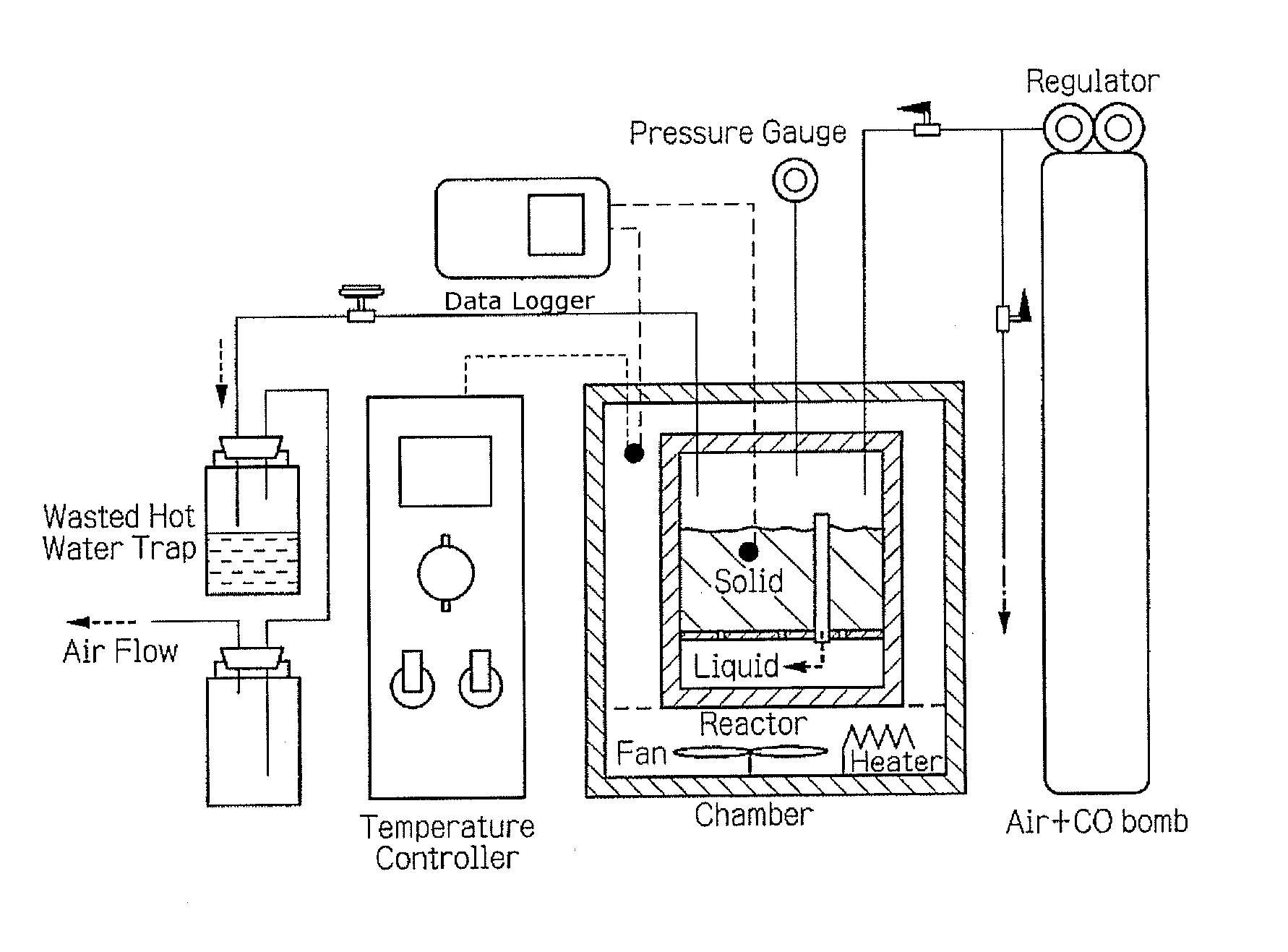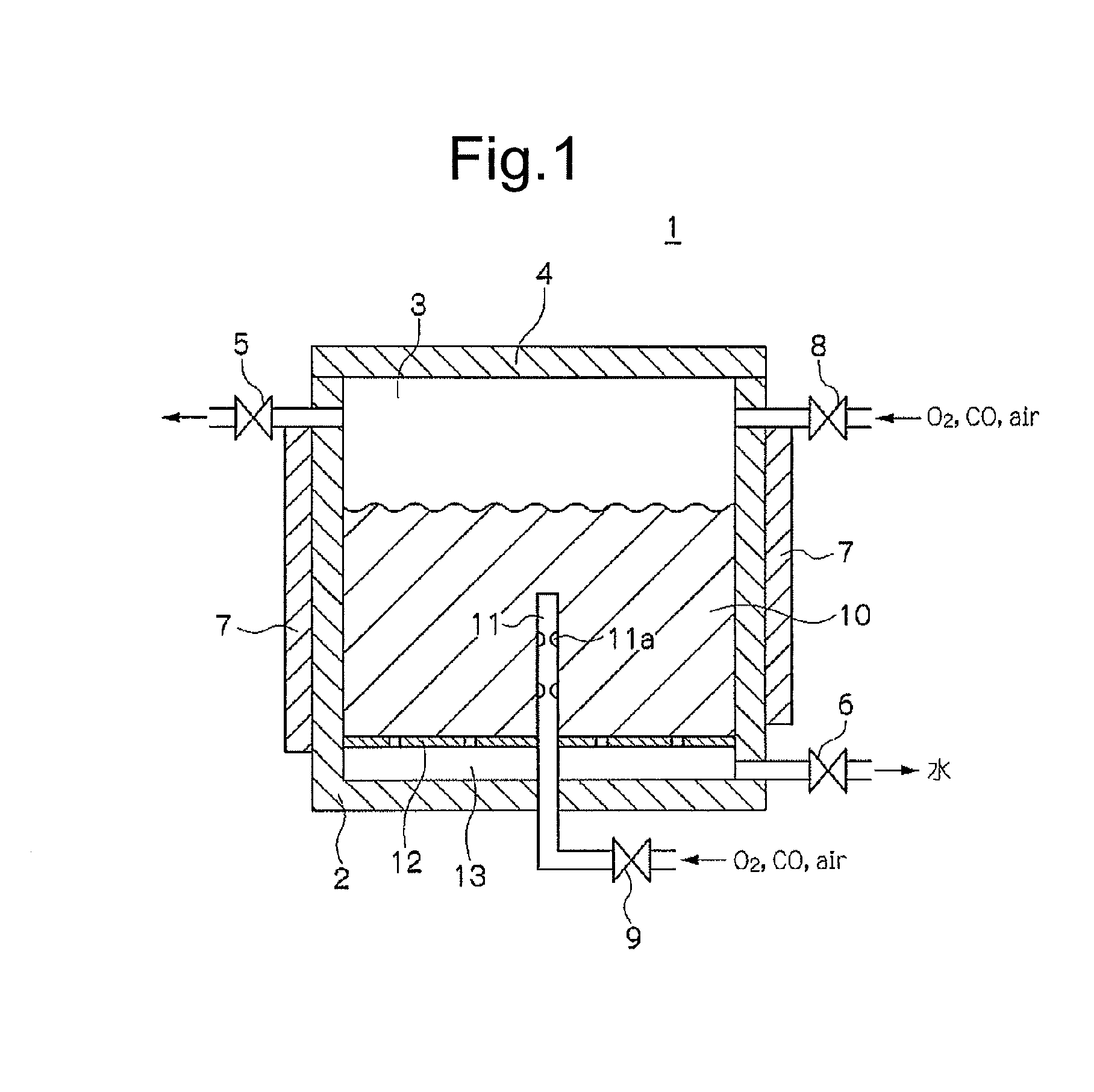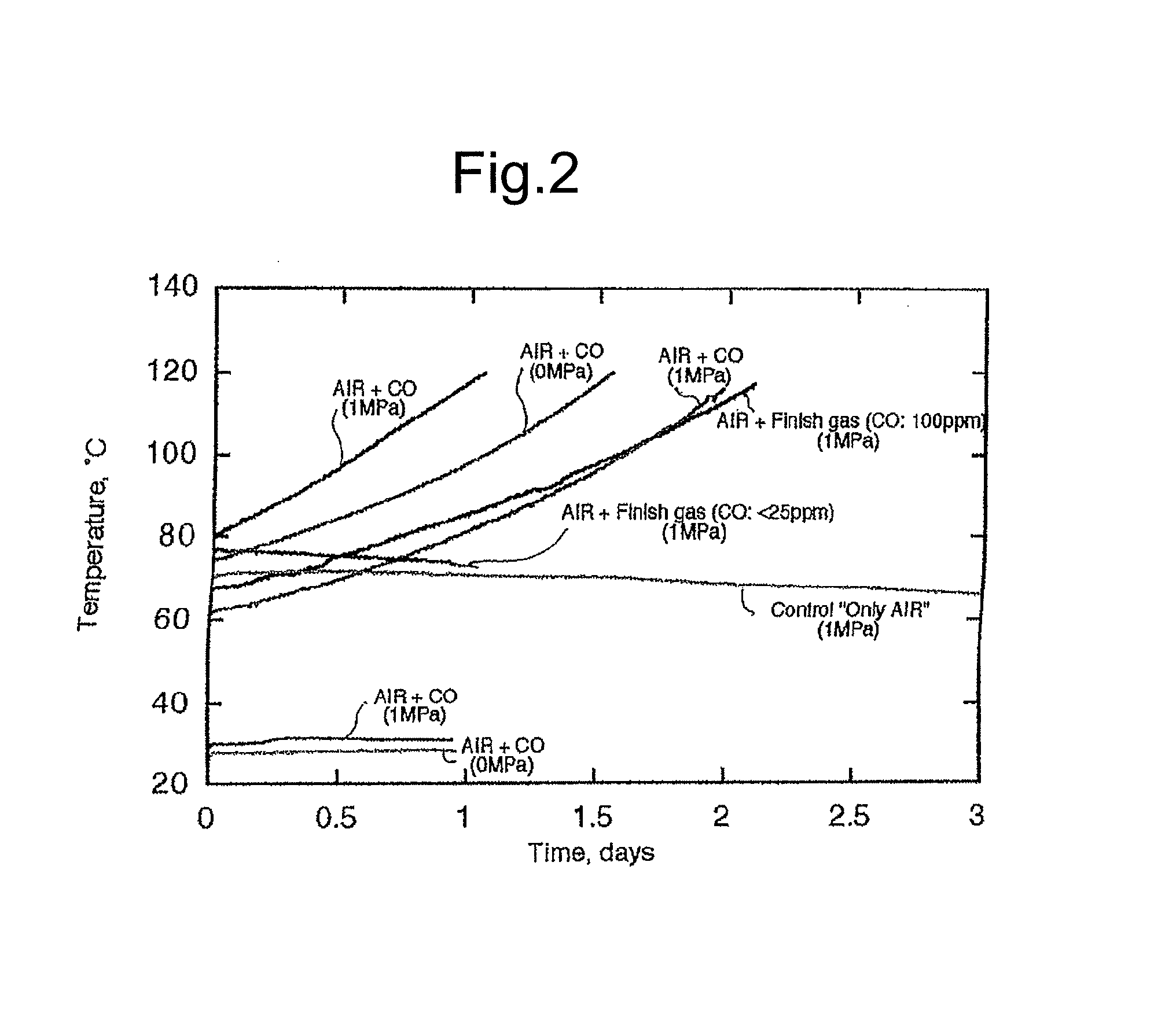Method for treating biomass material and method for using heat energy
a biomass material and heat energy technology, applied in the direction of sludge treatment by oxidation, combustion types, lighting and heating apparatuses, etc., can solve the problems of difficult composting of feces of livestock and the like, difficult biochemical reaction by ordinary microbial degradation, and hardly introduced, so as to improve the efficiency of biomass material treatment
- Summary
- Abstract
- Description
- Claims
- Application Information
AI Technical Summary
Benefits of technology
Problems solved by technology
Method used
Image
Examples
examples
[0080]Next, the method of treating the biomass material according to this invention is explained in detail by referring to specific experiments.
experiment 1
[0081]As a sample for an exothermic reaction test, feces of a milk cow obtained from a farm of the Agricultural Dept. of Utsunomiya University was used in the exothermic reaction test after adjusting its water content ratio at approximately 50-60% w.b. and after leaving the biomass material out at 30 degree Celsius for approximately 15 hours. For a test device, a container having a structural form similar to the one shown in FIG. 1 is used. 220 g of a sample (water content ratio: 51.6 w.b. %) is placed in a 1-litter reactor. Air is supplied into the container from gas valve 8 to maintain pressure in the container at 1 MPa. Carbon monoxide concentration of the container is measured by a gas detector (GASTEC, Japan). At 1 MPa the gas is measured after extracting the gas by an extraction bag of 1 litter, and at atmospheric pressure the gas is directly measured in the container.
[0082]FIG. 2 is a graph showing results of changes in temperature in an exothermic reaction in a container fil...
experiment 2
[0085]FIG. 3 is a graph showing changes in temperature in an exothermic reaction using dried feces of a milk cow when pressurizing at 1 MPa in a container after heating the dried feces of the milk cow in the range equal to or more than 50 degree Celsius and equal to or less than 70 degree Celsius. As a result of forcedly heating the dried feces of the milk cow in the range equal to or more than 50 degree Celsius and equal to or less than 70 degree Celsius, the temperature of the dried feces of the milk cow was increased even when the water content ratio is equal to or greater than 0% w.b. and equal to or less than 63.5% w.b. Therefore, it was confirmed that a water content ratio of biomass material does not involve with an exothermic reaction. On the other hand, in the case of a reference (water content ratio: 69.5% w.b. and initiated temperature: 70 degree Celsius) for which the exothermic reaction was initiated under atmospheric pressure, the temperature of the biomass material de...
PUM
| Property | Measurement | Unit |
|---|---|---|
| temperature | aaaaa | aaaaa |
| temperature | aaaaa | aaaaa |
| temperature | aaaaa | aaaaa |
Abstract
Description
Claims
Application Information
 Login to View More
Login to View More - R&D
- Intellectual Property
- Life Sciences
- Materials
- Tech Scout
- Unparalleled Data Quality
- Higher Quality Content
- 60% Fewer Hallucinations
Browse by: Latest US Patents, China's latest patents, Technical Efficacy Thesaurus, Application Domain, Technology Topic, Popular Technical Reports.
© 2025 PatSnap. All rights reserved.Legal|Privacy policy|Modern Slavery Act Transparency Statement|Sitemap|About US| Contact US: help@patsnap.com



